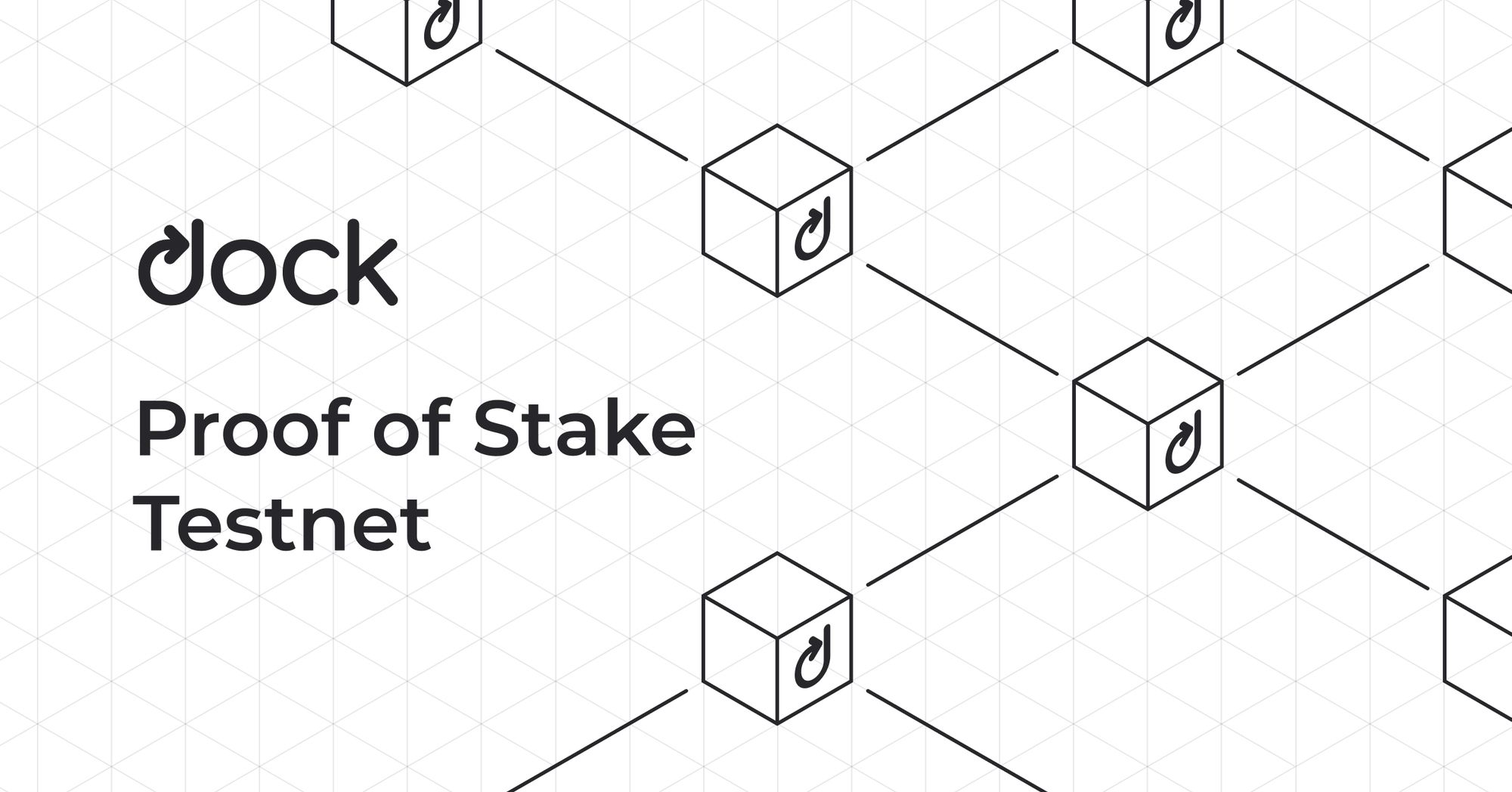The team at Dock has taken another step towards providing secure, decentralized credential solutions by transitioning our testnet to a Nominated Proof of Stake (NPoS) algorithm. We have kicked off this testing phase by successfully onboarding a number of candidate validators to the network, and will transition our current PoA mainnet to PoS as well once the security audit and testing activities are successfully completed, which is expected to happen by the end of June 2021.
What is Proof of Stake?
Proof of Stake (PoS) refers to an algorithm in which the validators are selected on a blockchain based on the amount of tokens they have staked. Validators are entities who are charged with the important tasks of producing blocks (hence processing blockchain transactions) and validating the blocks that are produced by other validators.
In PoS, validators are selected based on how many Dock tokens have been staked (locked up) in support of each candidate. Before validators are selected, candidate validators can stake their own tokens, and/or be backed by other token holders (“nominators”) who stake their tokens on the candidates’ behalf, and receive rewards if the candidates get selected and start producing blocks. Once the nomination period is over, the algorithm automatically selects the candidates with the largest stakes to become validators. The validators are incentivized to perform their duties properly, as the staked tokens can be slashed (taken away) in case of validator misbehavior.
This is distinct from the approach taken in Proof of Authority (PoA) - the algorithm currently used on the Dock mainnet. In PoA, validators are trustworthy entities selected by the Dock Association, a non-profit organization dedicated to overseeing the Dock network.
The transition to PoS takes the validator selection decisions away from a single entity (Dock Association) and distributes it across a network of nominators and validators, hence creating more decentralized power and greater security in the network.
An Open Network for Everyone
The transition to PoS also comes with further democratization of the network governance structure. Some of the governance for our current PoA mainnet is centralized to the Governing Council, as the Council members are the only ones who can vote on any changes to the network proposed by the Council or token holders. Once the mainnet transitions to PoS, however, Dock token holders will be able to vote on proposed changes to the network (including election of Council members) by locking up their tokens. This change, along with the ability for token holders to earn passive income by staking on behalf of successful validators, enhances the utility of the Dock tokens.
Participation by token holders as validators, nominators, and voters is made possible by the fact that the Dock network is a permissionless blockchain. This is unlike many of our competitors who leverage permissioned blockchains, and hence limit the access to their blockchain governance to the select few. It is part of Dock’s vision to build a network that has maximum participation and widespread adoption, and we believe that this can only be achieved through decentralization, democracy, and transparency offered by a public blockchain that is open for all token holders, and free from the control of a single entity.
What’s Next?
We will be running the PoS testnet for the next few weeks to ensure that all network features work correctly. During this time we will also work with Solidified, a team of security experts currently performing an audit on the PoS network, to ensure that the network is safe and secure. Once these steps are completed we will transition our mainnet to PoS as well. More posts will follow to keep the community posted on our progress and further explain the changes introduced in PoS.


